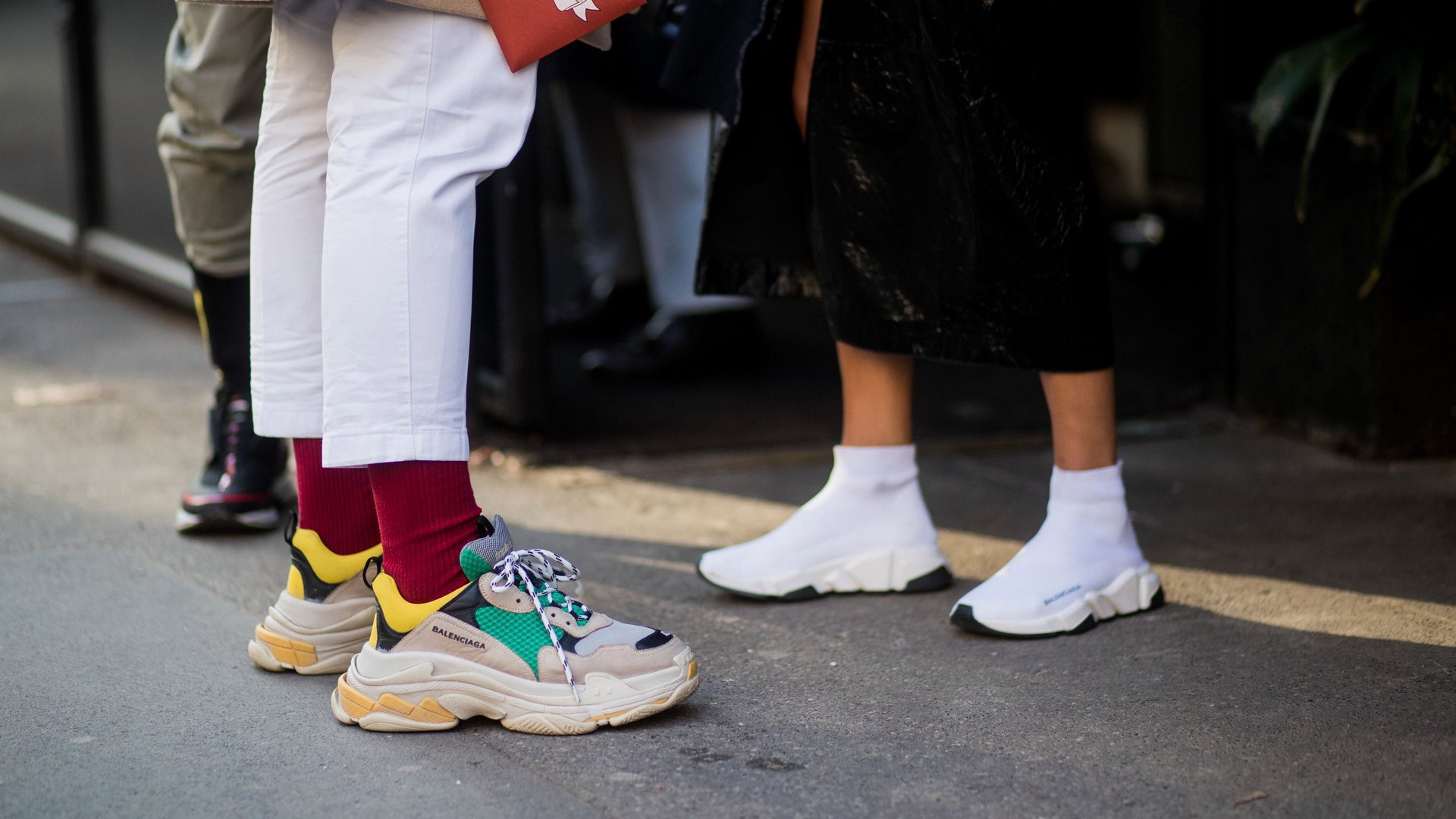Balenciaga’s designer explains its $2,000 “Ikea” bag and hugely popular “ugly” sneakers
Demna Gvasalia’s work for Balenciaga has attracted about as much notoriety as it has sales.


Demna Gvasalia’s work for Balenciaga has attracted about as much notoriety as it has sales.
The luxury fashion label has made headlines, and left some scratching their heads, with products such as a $2,145 replica of Ikea’s big, blue, cheap totes, and a $1,290 “t-shirt shirt” that’s basically a full button-up shirt attached to the front of a t-shirt. It introduced a $895, hulking behemoth of a sneaker, the Triple S, which has since been credited with helping kickstart a trend of chunky, “ugly” athletic shoes.
Gvasalia’s thought process hasn’t always been clear to those on the outside, but in a lengthy interview with WWD (paywall), the artistic director explained the intent of some of his controversial and coveted designs, including that pricey Ikea bag and the Triple S. To understand his thinking, it helps to start with Marcel Duchamp.
The French artist was a pioneer of the 20th-century Dada movement, which tossed aside long-standing assumptions about what art should or should not be. Duchamp’s best-known contribution was what he called the “Readymade,” mass-produced objects presented as art. As he argued, “An ordinary object [could be] elevated to the dignity of a work of art by the mere choice of an artist.”
The elevation of the everyday has been a hallmark for Gvasalia, who explained the personal importance of Duchamp’s art and approach to him. As for the tote itself, at the Royal Academy of Fine Art in Antwerp, where Gvasalia studied, he and other fashion students frequently used the Ikea bags because they were inexpensive and roomy. The memory and Duchamp’s inspiration together led to Balenciaga’s luxurious remake. “It’s a perfect example of Readymade, but there is a little bit more to it,” Gvasalia told WWD. “We changed the logo and we made it beautifully out of leather and that’s why it costs so much money.”
Gvasalia stressed that he’s far from the first to do it. He’s right: It’s common practice for designers, to varying degrees. Martin Margiela, for instance, would make replica versions of vintage garments. Helmut Lang would pull from police uniforms and other utilitarian items. Every pair of expensive designer jeans is arguably a similar form of appropriation, and designer Virgil Abloh has defended his own litany of appropriations by calling Duchamp his “lawyer.” Gvasalia is most different in the sources he’s using, and perhaps the gap in price between the original and its recreation.
The Triple S, meanwhile, was intended to be chunky, but never ugly. “It was really absolutely a proportional exercise of footwear, and not any kind of a gimmicky play with what was ugly or not ugly in shoe design,” he said. He explained that he prefers the look of large shoes, which he finds more “stable” and “masculine,” and that creating a new silhouette is what makes a product succeed.
“I’m not part of this ugly fashion,” he added. “I never liked ugly stuff really.”
To quibble a bit, the shoes are an exercise in excess—three soles hold up the aptly named Triple S—and clearly meant to be more gritty than pretty. But it’s a fair point. “Ugly” is relative, and just because something eschews common conceptions of good looks or taste doesn’t mean it isn’t attractive in its own right.
The Triple S falls into this camp for many—enough people anyway that it’s helped make Balenciaga one of luxury’s hottest brands.